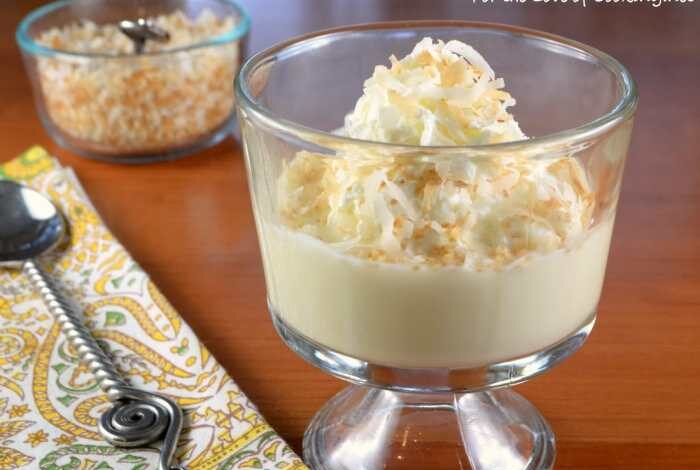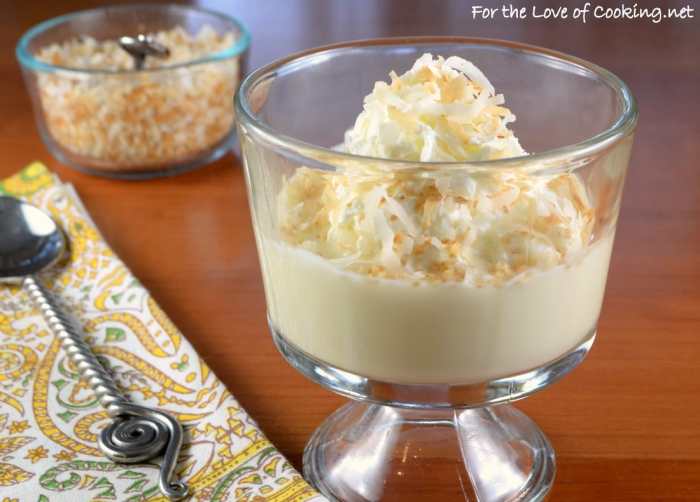
Maja Blanca Coconut Pudding: A Taste of the Philippines
Maja blanca coconut pudding, a beloved Filipino dessert, is a symphony of creamy coconut milk, sweet corn, and a touch of sugar. Its origins trace back to the Spanish colonial era, where it was enjoyed by both Filipinos and Spanish settlers.
This simple yet decadent treat has become a staple in Filipino households and a cherished part of their culinary heritage.
The key ingredients in maja blanca, coconut milk, and corn, play a crucial role in creating its unique texture and flavor. Coconut milk provides a rich, creamy base, while the corn adds a touch of sweetness and a delightful chewiness.
The combination of these ingredients, along with a hint of sugar, creates a harmonious blend of flavors that is both comforting and satisfying.
Variations and Regional Differences: Maja Blanca Coconut Pudding

Maja blanca, a beloved Filipino coconut pudding, exhibits diverse regional variations, reflecting the rich culinary traditions and local ingredients across the archipelago. These variations not only showcase the versatility of this simple dessert but also highlight the cultural nuances and culinary heritage of different regions.
Regional Variations of Maja Blanca
The variations in maja blanca primarily stem from the addition of unique ingredients and adjustments in preparation methods. These variations are often influenced by the availability of local ingredients, cultural preferences, and historical influences.
- Visayas:In the Visayas region, maja blanca is often enriched with ube(purple yam), lending a vibrant purple hue and a subtly sweet, earthy flavor. This variation is known as Maja Blanca Ubeand is a popular treat in festivals and celebrations.
- Mindanao:In Mindanao, especially in the southern regions, maja blanca is often flavored with langka(jackfruit), adding a distinct sweet and slightly tangy note. This variation is known as Maja Blanca Langkaand is often enjoyed with a drizzle of latik(toasted coconut flakes).
- Luzon:In Luzon, maja blanca is often made with a combination of coconut milk and evaporated milk, resulting in a richer and creamier texture. This variation is known as Maja Blanca Lecheand is often served with a dollop of whipped cream or a sprinkle of cinnamon.
Textural and Flavor Differences, Maja blanca coconut pudding
The variations in maja blanca also result in noticeable differences in texture and flavor.
- Maja Blanca Ube:The addition of ubeimparts a distinct purple color and a creamy, smooth texture. The flavor is a blend of sweet coconut and earthy ube, creating a unique and satisfying taste experience.
- Maja Blanca Langka:The addition of langkaresults in a slightly chunky texture due to the presence of jackfruit pieces. The flavor is a combination of sweet coconut and tangy jackfruit, offering a complex and interesting taste profile.
- Maja Blanca Leche:The use of evaporated milk adds a richer and creamier texture to the pudding. The flavor is more pronounced in terms of sweetness and coconut flavor, creating a classic and comforting taste.
Cultural Significance of Regional Variations
The regional variations of maja blanca are not merely culinary differences but also reflect the cultural heritage and culinary traditions of different regions.
- Visayas: Maja Blanca Ubeis often served during festivals and celebrations, symbolizing prosperity and good fortune. The purple color of the pudding is associated with royalty and abundance.
- Mindanao: Maja Blanca Langkais a popular dessert in Mindanao, especially during Ramadan, where it is enjoyed as a sweet treat after breaking the fast. The use of langkareflects the abundance of this fruit in the region.
- Luzon: Maja Blanca Lecheis a popular dessert in Luzon, often served during family gatherings and special occasions. The rich and creamy texture of the pudding represents comfort and indulgence.

